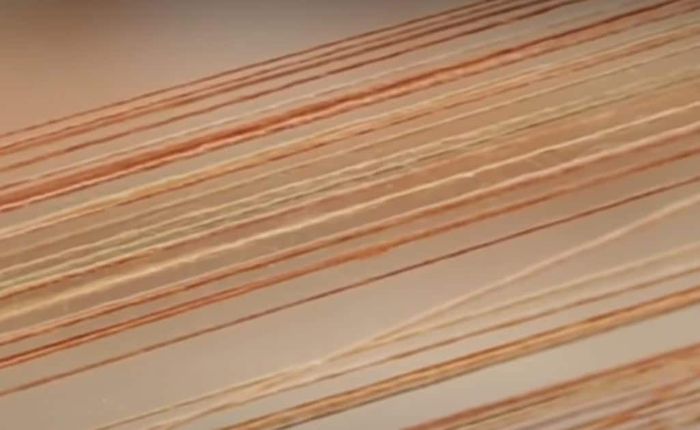Sericulture is the process of cultivating silkworms and extracting silk from them. Caterpillars of the domestic silk moth are the most commonly used silkworm species in sericulture.
Silk is a fibre made of two different proteins, sericin and fibroin. Fibroin is concentrated at the core. This core is surrounded by a layer of sericin. The presence of pigments in the sericin layer of the fibre impacts colour to the silk. Each silk type has a distinct colour. Mulberry silk is yellow/ green, Eri silk is creamy white/ brick red, Tasar silk is copper red and Muga silk is golden. Mulberry silk follows three primary steps; moriculture, silkworm rearing and silk reeling.
Moriculture and Silk rearing
Moriculture is the cultivation of mulberry plants whose leaves are used as silkworm feed. They can be cultivated from seeds, root grafting or stem grafting. Stem grafting is the commonly used method
Silk rearing begins with the rearing of eggs by the female silk moths. Typically 300-500 eggs are obtained from 1 silk moth. These eggs are the disinfected with help of 2% formulant solution. A feeding bed is prepared on a rearing tray by sprinkling chopped mulberry leaves onto it.
Silk Rearing
Hatched larvae are transferred into tray via threshing. Foam strips are soaked in water and placed on the tray to maintain humidity. Silkworm larvae initially have good appetite which diminishes as they grow until the active stage where silkworms eat enthusiastically until final feeding stage.
After reaching maturity, the larvae begins searching for hospitable places to begin palpation. The mature larvae wrap themselves in cocoons by secreting saliva. This saliva solidifies and becomes silk
Silk reeling
In final stage, stifling is done to the cocoon. Now silk filaments are removed from the dead cocoon via reeling. These filaments are twisted into a thread with help of a series of guides and pulleys.



















